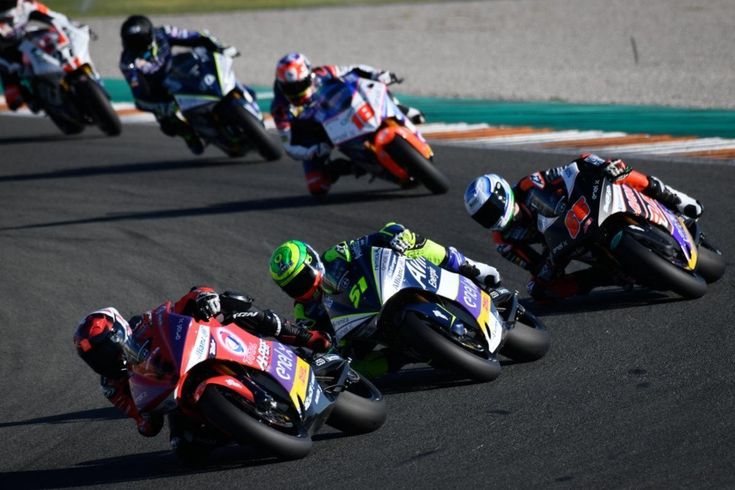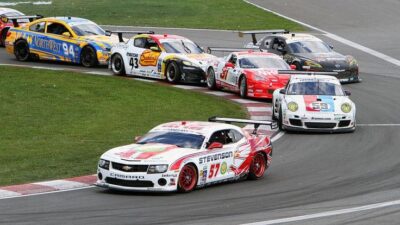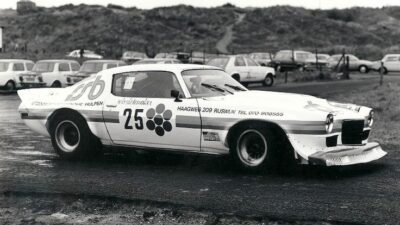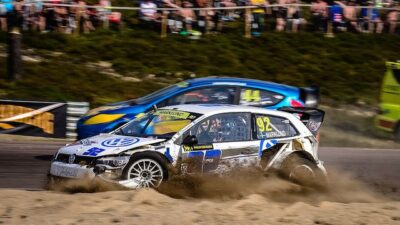Electric motorcycles are transforming competitive racing with instant power delivery and eco-friendly performance that rivals traditional gas-powered bikes. Major racing series like MotoE World Championship and the new X-Pro Class in Arenacross showcase how electric motorcycles now compete at the highest levels of motorsport.

The technology behind these racing machines has advanced rapidly, with models like the Lightning LS-218 reaching speeds of 218 mph and proving that electric power can deliver thrilling acceleration and exceptional performance. Battery improvements now allow electric race bikes to maintain competitive lap times while offering the unique advantage of instant torque.
Racing organizations are embracing this shift as electric motorcycles represent a major transformation in the racing industry, combining high-speed competition with environmental responsibility. Both road racing and motocross events are integrating electric classes, creating new opportunities for riders and manufacturers to push the boundaries of what electric motorcycles can achieve on the track.
Key Takeaways
- Electric motorcycles now compete in major racing series with performance levels matching traditional gas-powered bikes
- Advanced battery technology enables electric race bikes to deliver instant torque and competitive speeds up to 218 mph
- Racing organizations are creating dedicated electric classes that combine environmental benefits with high-speed competition
Evolution of Electric Motorcycles in Racing

The transformation from traditional combustion engines to electric power in motorcycle racing began in the early 2000s with experimental machines and has rapidly evolved into professional racing series. Major manufacturers and racing organizations have embraced electric technology, creating dedicated competitions that showcase the potential of battery-powered motorcycles.
Transition from Combustion to Electric Power
Early electric racing motorcycles emerged as experimental projects in the mid-2000s. These machines faced significant challenges with limited battery life and reduced power output compared to their gasoline counterparts.
The technological evolution has matured significantly, with modern electric racing bikes delivering comparable performance to traditional motorcycles. Battery technology improvements enabled longer race distances and higher speeds.
Key Performance Improvements:
- Battery capacity increased from 5-10 kWh to 15-20 kWh
- Top speeds rose from 120 mph to over 155 mph
- Race distances extended from 3-5 laps to 10+ laps
MotoGP’s integration of electric technology represents the sport’s commitment to innovation. The transition required new regulations, safety protocols, and technical specifications.
Manufacturers adapted existing chassis designs for electric powertrains. Weight distribution changed significantly due to battery placement, requiring new engineering approaches for handling and stability.
Key Historical Milestones and Events
The Isle of Man TT Zero race, launched in 2010, became the first major electric motorcycle competition. This single-lap race around the famous 37.73-mile course established credibility for electric racing motorcycles.
American Michael Czysz built pioneering electric racing machines that dominated early TT Zero competitions. His team’s success against Honda’s Mugen team proved electric motorcycles could compete at the highest levels.
Major Racing Milestones:
- 2010: First TT Zero race held
- 2013: Lightning LS-218 wins overall at Pikes Peak
- 2019: MotoE series launches
- 2025: Electric racing combines speed and sustainability
The rise of electric motorcycle racing gained momentum when major racing organizations recognized the sport’s potential. Formula E’s success in four-wheel racing demonstrated electric motorsport’s commercial viability.
MotoE’s introduction in 2019 marked electric motorcycles’ entry into the MotoGP paddock. The series features identical Energica Ego Corsa bikes capable of reaching 155 mph.
Pioneering Races and Early Adoption
The TT Zero race established the foundation for competitive electric motorcycle racing. Early races featured speeds exceeding 117 mph average around the challenging Isle of Man course.
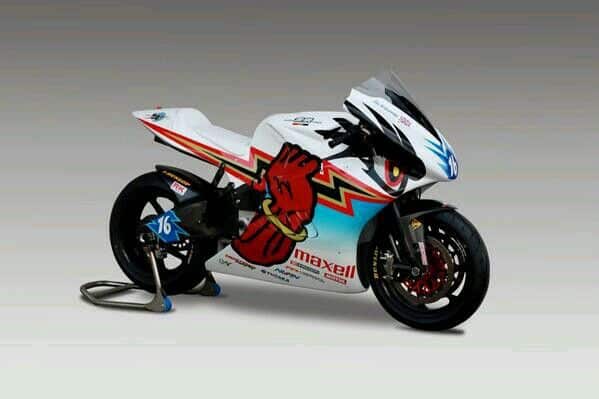
Pikes Peak International Hill Climb became another proving ground for electric motorcycles. In 2013, the Lightning LS-218 won the motorcycle division outright, defeating all gasoline-powered competitors.
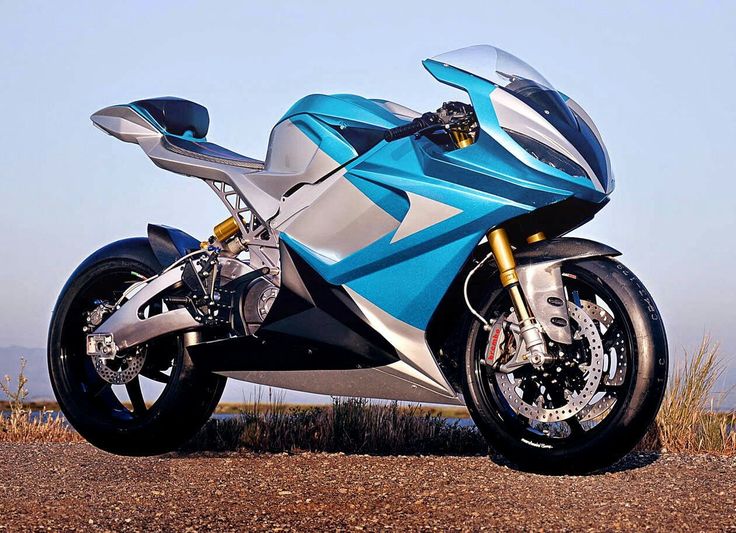
The eMotoRacing series created the first club-level electric motorcycle competition. This grassroots series allowed production bikes from Zero and Brammo to compete in modified configurations.
MotoE demonstrates that electric motorcycles can hold their own in professional racing environments. The series runs alongside MotoGP weekends, exposing millions of fans to electric racing.
Current Racing Series:
- MotoE World Cup (professional)
- TT Zero (Isle of Man)
- eMotoRacing (club level)
- Electric superbike championships (regional)
These pioneering events proved electric motorcycles could deliver exciting racing while advancing battery and motor technology for consumer applications.
Major Electric Motorcycle Racing Series

Electric motorcycle racing has grown from experimental events to established professional series with dedicated championships and international recognition. MotoE represents the premier level of electric motorcycle competition, while numerous other series have emerged globally to showcase this rapidly evolving technology.
Overview of the MotoE World Championship
MotoE serves as the flagship electric motorcycle racing series, running alongside the prestigious MotoGP championship. The series features identical Energica Ego Corsa race bikes across all teams, creating a spec racing format that emphasizes rider skill.
Race Format and Structure:
- 10-lap sprint races
- Top speed of 155 mph
- 18 identical motorcycles per season
- Teams operate within the MotoGP paddock
The championship attracts professional riders who compete on some of the world’s most challenging circuits. Electric motorcycles in MotoE now deliver performance that rivals traditional combustion engines, with instant torque providing unique racing dynamics.
Battery management becomes a critical strategic element. Teams must balance aggressive riding with energy conservation throughout each race. This creates tactical depth that traditional motorcycle racing lacks.
Other Professional and Amateur Competitions
The FIM SuperEnduro World Championship incorporates electric motorcycles alongside gas-powered bikes in the same Prestige class. Balance of Performance regulations ensure competitive parity between different power sources.
Sweden launched the RGNT TURBO Championship as the country’s first dedicated electric motorcycle racing series. This competition showcases both speed and innovation in electric motorcycle technology.
Key Competition Types:
- Professional Series: MotoE, SuperEnduro
- National Championships: RGNT TURBO (Sweden)
- Mixed Format: Electric and combustion bikes competing together
- Spec Racing: Identical bikes across teams
Amateur and semi-professional events continue expanding globally. These competitions provide development pathways for riders transitioning from traditional motorcycles.
International Growth of Electric Motorcycle Racing
Electric motorcycle racing has achieved significant international expansion with new series launching across multiple continents. Racing organizations are developing specific regulations for electric competitions.
The Fédération Internationale de Motocyclisme creates standardized rules for international electric motorcycle racing. These regulations cover battery specifications, safety protocols, and competitive procedures.
Global Development Indicators:
- Multiple manufacturers entering competition
- Dedicated electric racing circuits
- Professional rider participation increasing
- Sponsorship from technology companies
Manufacturers like Energica and Ducati invest heavily in electric racing development. This competition drives rapid technological advancement in battery systems and motor performance.
Regional championships emerge as stepping stones to international competition. These series develop local talent while building fan bases for electric motorcycle racing.
Technological Advancements Powering Competition

Electric motorcycle racing depends on three key areas of innovation that directly impact track performance. Battery technology improvements enable longer race distances, while advanced electric motors deliver instant torque that changes how riders compete.
Battery Technology and Performance
Modern racing batteries use lithium-ion cells with enhanced energy density. These batteries store more power in smaller packages compared to older designs.
Key Performance Metrics:
- Energy density: 250-300 Wh/kg
- Charging time: 30-45 minutes for 80% capacity
- Temperature range: -10°C to 60°C operating range
Advances in battery technology now allow electric motorcycles to achieve competitive range and power output. Race teams use battery management systems that monitor individual cell temperatures and voltages.
Fast-charging capabilities reduce pit stop times during endurance races. Some systems can add 50 miles of range in just 15 minutes of charging.
Battery cooling systems prevent overheating during high-speed racing conditions. Liquid cooling maintains optimal temperatures even during aggressive track sessions.
Electric Motors and Powertrains
Electric motors in racing motorcycles produce maximum torque instantly from zero RPM. This characteristic gives riders immediate acceleration out of corners.
Most race bikes use permanent magnet synchronous motors. These motors offer high efficiency ratings above 95% and consistent power delivery.
Motor Specifications:
- Power output: 100-200 kW peak
- Torque: 200-400 Nm instantly available
- Weight: 15-25 kg for complete motor unit
Single-speed transmissions simplify the drivetrain compared to multi-gear gas engines. Riders focus on racing lines rather than gear changes during competition.
Regenerative braking systems capture energy during deceleration. This technology extends range and reduces brake wear during long races.
Chassis Design and Lightweight Materials
Racing chassis use carbon fiber and aluminum alloys to minimize weight. Every pound removed improves acceleration and handling characteristics.
Material Comparison:
| Material | Weight Savings | Cost Factor | Strength Rating |
|---|---|---|---|
| Carbon Fiber | 40-60% | High | Excellent |
| Aluminum Alloy | 20-30% | Medium | Good |
| Magnesium | 30-40% | High | Very Good |
Battery placement affects weight distribution and center of gravity. Engineers position batteries low in the frame for better stability during cornering.
Electric motorcycles require less cooling airflow than gas engines. This allows for more aerodynamic fairings that reduce drag at high speeds.
Suspension systems adapt to the different weight distribution of electric powertrains. Adjustable damping helps riders optimize handling for various track conditions.
On-Road vs. Off-Road Electric Racing

Electric motorcycles compete in two distinct racing environments, each requiring different technologies and skills. On-road racing focuses on speed and aerodynamics on paved circuits, while off-road racing emphasizes power delivery and durability across varied terrain.
Characteristics of On-Road Electric Motorcycle Racing
On-road electric motorcycle racing takes place on paved circuits and closed courses. These events prioritize maximum speed, precise handling, and aerodynamic efficiency.
Electric motorcycles in on-road racing feature streamlined designs to reduce wind resistance. The bikes use advanced battery management systems to maintain consistent power output throughout races.
Key Technical Features:
- High-capacity lithium batteries for extended range
- Regenerative braking systems for energy recovery
- Lightweight carbon fiber bodywork
- Advanced cooling systems for motors and batteries
On-road racing requires different strategies than traditional motorcycle racing. Riders must manage battery consumption while maintaining competitive lap times.
The racing format often includes shorter sprint races to accommodate current battery technology. Teams focus on optimizing power delivery and thermal management during competition.
Growth in Off-Road and Flat Track Racing
Off-road electric racing motorcycles are gaining traction among adventure enthusiasts who participate in motocross, enduro, and rally events. The market shows strong growth as technology improves.
Electric motocross bikes deliver instant torque and operate silently, creating new racing opportunities. These bikes produce zero emissions during competition.
Off-Road Racing Growth Factors:
- Improved battery technology and longer range
- Reduced maintenance compared to gas engines
- Access to noise-restricted venues
- Environmental regulations favoring electric vehicles
Events like the FIM E-Xplorer World Cup demonstrate the competitive performance of electric dirt bikes in professional racing. These competitions showcase advancing electric motorcycle capabilities.
Flat track racing with electric motorcycles offers unique challenges. The constant acceleration and cornering demands test battery management and motor cooling systems.
Notable Manufacturers and Models
Several manufacturers lead electric motorcycle racing development across both on-road and off-road categories. These companies focus on different racing applications and performance requirements.
Leading Racing Manufacturers:
| Manufacturer | Specialty | Notable Models |
|---|---|---|
| KTM | Off-road racing | Electric motocross bikes |
| Energica | On-road racing | Ego Corsa series |
| Alta Motors | Motocross/Enduro | Redshift models |
| Lightning | Speed records | LS-218 |
KTM electric motocross bikes feature advanced battery technology and charging systems designed for competitive racing. The company focuses on off-road performance and durability.
Energica produces high-performance electric motorcycles specifically for track racing. Their bikes compete in professional racing series worldwide.
Many manufacturers develop models that bridge both racing categories. Electric cross motorcycles offer versatility for both off-road adventures and on-road use, providing flexibility for different racing formats.
The racing development drives innovation in consumer electric motorcycles. Technologies proven in competition eventually reach production models for everyday riders.
Challenges and Opportunities for Electric Racing

Electric motorcycle racing faces key technical hurdles while opening doors to new markets and sustainable practices. Battery limitations and charging infrastructure present immediate challenges, but growing audience interest and environmental benefits create significant opportunities for the sport’s future.
Current Technical and Regulatory Barriers
Battery technology remains the biggest challenge in electric motorcycle racing. Current batteries struggle to match the range and quick refueling times of gas-powered bikes.
Most electric race bikes can only run for 20-30 minutes at full speed. Traditional motorcycle racing events last much longer. This forces race organizers to completely redesign event formats.
Charging infrastructure presents major obstacles for competitive racing. Tracks need powerful charging systems that can handle multiple bikes quickly.
Key Technical Barriers:
- Limited battery capacity for long races
- Heavy battery weight affecting performance
- Long charging times between sessions
- Heat management during intense racing
Safety regulations for electric motorcycles are still being developed. Racing bodies must create new rules for high-voltage systems and battery safety.
The lack of standardized regulations across different racing series creates confusion. Teams struggle to meet varying requirements in different competitions.
Market Growth and Audience Engagement
Electric racing motorcycle market competition is intensifying as manufacturers and startups fight for market share through innovation and partnerships.
Younger audiences show strong interest in electric motorcycle racing. These fans care more about technology and environmental impact than traditional racing fans.
Streaming platforms and social media help electric racing reach new viewers. The quiet nature of electric bikes allows for better communication during broadcasts.
Audience Growth Factors:
- Tech-savvy younger demographics
- Environmental consciousness
- Social media engagement
- Unique racing formats
Sponsors from technology and green energy sectors are entering the sport. These companies see electric racing as a perfect match for their brand values.
Electric race bikes are leading innovation in motorsports and attracting attention from both fans and investors.
Traditional motorcycle manufacturers are launching electric racing programs. This brings established expertise and resources to the growing sport.
Sustainability Initiatives in Motorsport
Electric motorcycle racing offers a clear path toward environmentally friendly motorsports. The sport produces zero direct emissions during races.
Many racing series are implementing comprehensive sustainability programs. These include renewable energy for charging and carbon-neutral event operations.
Sustainability Benefits:
- Zero race-day emissions
- Reduced noise pollution
- Renewable energy integration
- Waste reduction programs
Teams are using recycled materials in bike construction and equipment. Some series require teams to meet specific environmental standards.
The fusion of speed and sustainability creates an appealing racing experience for environmentally conscious fans and participants.
Electric racing venues can operate in urban areas due to lower noise levels. This opens up new locations that were impossible for traditional motorcycle racing.
Corporate sponsors increasingly demand sustainable partnerships. Electric motorcycle racing provides companies with a platform to showcase environmental commitments while supporting exciting competition.
The Future of Electric Motorcycles in Competitive Racing

Electric motorcycles are transforming competitive racing through advanced battery technology, growing manufacturer investments, and expanding championship series. The sport is moving toward mainstream acceptance as performance gaps with traditional motorcycles continue to narrow.
Trends Shaping the Next Generation
Battery technology improvements drive the biggest changes in electric motorcycle racing. Modern electric motorcycles now deliver comparable power outputs to their gasoline counterparts. Range anxiety becomes less of an issue as battery capacity increases.
Manufacturers focus on reducing weight while maintaining power delivery. Carbon fiber frames and lightweight components help electric motorcycles achieve better power-to-weight ratios. These improvements make races more competitive.
Smart connectivity features set electric motorcycles apart from traditional bikes. Real-time data monitoring helps riders optimize performance during races. Teams can adjust settings remotely between race segments.
Electric racing competitions are gaining popularity as testing grounds for new technologies. These events push manufacturers to develop faster, more efficient machines. Competition drives innovation at a rapid pace.
Key Technology Trends:
- Battery Density: Higher energy storage in smaller packages
- Motor Efficiency: More power with less energy consumption
- Charging Speed: Faster pit stop capabilities
- Data Analytics: Advanced performance monitoring systems
Increasing Investment and R&D
Major motorcycle manufacturers now allocate significant budgets to electric racing programs. Companies view racing as a way to develop technologies for consumer electric motorcycles. This creates a feedback loop between racing and street bikes.
The Electric Racing Motorcycle market is characterized by intense competition among established manufacturers and startups. Traditional brands like Yamaha and Honda compete against electric specialists. This competition accelerates development timelines.
Research and development focuses on solving specific racing challenges. Engineers work to improve acceleration, top speed, and race duration. Battery cooling systems receive particular attention for sustained performance.
Venture capital flows into electric motorcycle startups focused on racing applications. These companies often develop breakthrough technologies that larger manufacturers later adopt. The startup ecosystem drives disruptive innovations.
Investment Areas:
- Battery chemistry research
- Motor design optimization
- Thermal management systems
- Lightweight materials development
Potential for Mainstream Adoption
The 2025 World Supercross Championship season promises to be the biggest, most exciting and now most innovative with Stark Future’s electric team competing against traditional motorcycles. This marks a significant step toward mainstream acceptance.
Electric motorcycles will likely compete in dedicated classes before full integration with gasoline bikes. Separate championships allow the technology to mature while building fan interest. Mixed competition will follow as performance equalizes.
Fan acceptance grows as electric motorcycle racing becomes more common. Younger audiences show particular interest in sustainable racing formats. Television coverage increases as major racing series adopt electric categories.
The growing popularity of performance electric bikes is reflected in rising sales figures and increased participation in competitive racing events. Consumer demand drives manufacturer commitment to racing programs.
Cost reduction makes electric motorcycle racing more accessible to smaller teams. Lower maintenance requirements and simpler drivetrains reduce operating expenses. This democratizes competitive racing participation.
Frequently Asked Questions

Electric motorcycle racing involves specific technical requirements and performance capabilities that differ from traditional racing. The technology continues advancing rapidly while major manufacturers invest heavily in developing competitive electric racing bikes.
What are the specifications for leading electric motorcycles in competitive racing?
Racing electric motorcycles feature high-performance electric motors and advanced battery systems designed for track use. Most competitive models produce between 150-200 horsepower with instant torque delivery.
Battery capacity typically ranges from 18-22 kWh for endurance racing formats. Weight distribution differs significantly from petrol bikes due to battery placement in the chassis.
Front wheel sizes vary by racing class. Micro-E racing classes have specific wheel size requirements, with Micro-E1 allowing maximum 12-inch front wheels and Micro-E2 limited to 10-inch maximum.
How does the performance of electric motorcycles compare to traditional petrol bikes in racing?
Electric motorcycles deliver instant torque from zero RPM, providing exceptional acceleration off the line. This gives them advantages in sprint races and tight technical circuits.
Top speeds remain competitive with petrol bikes in most racing categories. Electric motors maintain consistent power output throughout their RPM range without the power curves of combustion engines.
Weight distribution affects handling characteristics differently. Battery placement lowers the center of gravity but increases overall weight compared to traditional racing bikes.
What advancements in electric motorcycle technology are influencing competitive racing?
Battery energy density improvements extend racing distances and reduce weight penalties. Fast-charging capabilities allow for pit stop strategies similar to traditional racing.
Motor efficiency gains increase power output while managing heat generation. Advanced cooling systems maintain optimal operating temperatures during extended track sessions.
Regenerative braking systems recover energy during deceleration. This technology helps extend battery life during races while providing consistent braking performance.
Which racing championships have categories for electric motorcycles?
MotoE represents the premier electric motorcycle racing series, running alongside MotoGP events. This championship features identical spec bikes for close competition.
Various national championships now include electric categories alongside traditional classes. Amateur racing organizations add electric divisions to accommodate growing interest.
Electric racing competitions are expanding rapidly as manufacturers invest more resources in developing racing technology.
How are manufacturers like Ducati impacting the electric motorcycle racing scene?
Ducati developed the V21L electric racing bike specifically for MotoE competition in 2023. This high-performance machine serves as the spec bike for the entire series.
Other major manufacturers invest heavily in electric racing development programs. These efforts drive technology advancement that benefits both racing and consumer electric motorcycles.
Racing programs help manufacturers test new technologies under extreme conditions. Competition environments accelerate development timelines for battery, motor, and cooling innovations.
What are the current standings in Moto E or other electric motorcycle racing leagues?
MotoE championship standings change throughout each racing season as riders compete on identical Ducati V21L machines. The spec bike format ensures close racing based on rider skill rather than equipment advantages.
Various regional electric racing series maintain their own championship standings. These competitions often feature different manufacturers and bike specifications.
The electric racing scene continues evolving rapidly with new championships and categories being established regularly as interest grows.
